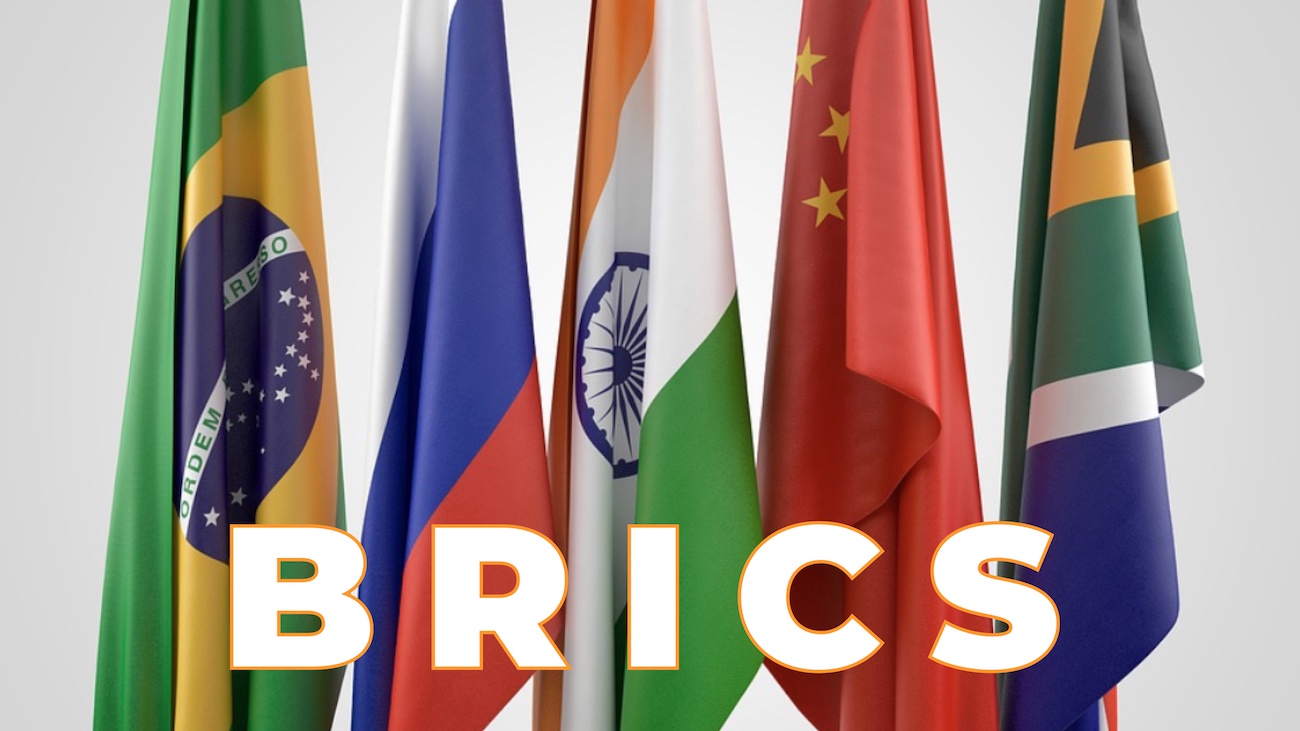BRICS 3.0 — What now?

On the final day of the BRICS meeting in Johannesburg (22–24 August 2023), South African leader Cyril Ramaphosa announced that the current member countries will open the doors to BRICS for six new countries in 2024: Argentina, Egypt, Ethiopia, Iran, Saudi Arabia, and the United Arab Emirates.
BRICS was born in 2009 as BRIC, an association of Brazil, Russia, India, and China, with a focus on facilitating investments among themselves—conceptualised in this article as BRICS 1.0.
With the inclusion of South Africa into the organsiation in 2010, the name changed to BRICS—henceforth thought of as BRICS 2.0.
The bloc’s cooperation today is said to rest on three pillars:
- Politics & Security
- Finance & Economy
- Culture & People-to-People Contacts
Why did BRICS choose to include these six countries out of a pool of 38 that have applied or expressed interest in joining the world’s only multipolar economic cooperation organisation?
The map below indicates that the purpose of BRICS 3.0—with eleven members from 1 January 2024—could be a desire to defuse the explosive conflicts in international politics that the US-led West has escalated for decades, and in the same breath, to establish the political and physical infrastructure for a new multipolar world order.
Together, Iran, Saudi Arabia, and the United Arab Emirates dominate the Persian Gulf and the maritime traffic in and out of it.
Egypt and Ethiopia together control the maritime traffic between the Mediterranean Sea and the Indian Ocean.
South Africa controls the maritime traffic around the southern tip of Africa, the Cape of Good Hope.
Iran
Under the leadership of the United States, in league with Israel, the West has for half a century, incited against Shia-majority Iran. This will probably become more difficult from 2024 onwards, when the country is no longer an isolated pariah in world politics but a member of the world's largest international organization for multipolar cooperation.
Unfortunately, the conflict-laden and New York-based United Nations seems increasingly unable to play a constructive role in world politics.
Saudi Arabia
Sunni-majority Saudi Arabia has also been one of the American pawns in the game against Tehran—a game that seems to have been thwarted by the agreement that China helped establish between the two neighbours in 2023, the ground prepared by Moscow.
Global De-dollarisation
The Kingdom of Saudi Arabia was also a cornerstone of the "petrodollar" created by the US in the early 1970s, a system which subsequently forced all countries in the world always to hold American dollars in reserve, as oil could only be bought with dollars—an arrangement that Saudi Arabia, as a leading oil-producing country, was part of.
However, in four months, Saudi Arabia will be a member of an organisation whose priority is to de-dollarise the global community—thus undercutting a strategic pillar of US World domination.
South Africa's Cyril Ramaphosa said on 22 August 2023:
There is global momentum to use of local currencies, alternative financial arrangements and alternative payment systems. As BRICS we are ready to explore opportunities for improving the stability, reliability and fairness of the global financial architecture.
Ethiopia
Similarly to many of its neighbours in Africa, Ethiopia has been affected by American imperial ambitions. Washington's plan for Ethiopia is the same as for the Russian Federation: to crush centralised political power, break up the territory and parcel out the chunks to a new generation of wannabe US vassals.
Argentina
With Argentina as a new member of BRICS, where Brazil is already present, BRICS has established a secure foothold in the New World. [Editor's note: How secure the foothold is depends on the forthcoming general election.]
As of today in 2023, the current five BRICS countries together represent:
- 42% of the world's population—3.2 billion people
- 30% of the Earth's land area
- 24% of the world's combined GDP
By 2024, the BRICS countries together will represent:
- 47% of the world's population—3.7 billion people
- 36% of the Earth's land area
- 27% of the world's combined GDP
Here are 32 countries that have also expressed interest or applied for BRICS membership:
If these countries joined BRICS, it would represent:
- 68% of the world's population—5.3 billion people
- 52% of the Earth's land area
- 34% of the world's combined GDP
The GDP figure should be taken with a grain of salt, as BRICS 3.0 could result in economic growth among the members, as well as a decline for an apparently moribund United States of America and a European Union indulging in self-harming sanctions which strengthen Russia whilst deindustrializing Western Europe.
What Happens Now?
The issues that remain unresolved are:
How will the US-led West react to the path laid out by BRICS 3.0?
Will Washington come to its senses and find its own path into the multipolar world order promised by BRICS, or will it attempt to derail the process?
Given NATO's and the West's failure on the battlefield in Ukraine in 2022–2023, what other instruments are in fact available in the toolshed of Western imperialism?
Read the full article at the original website
References:
